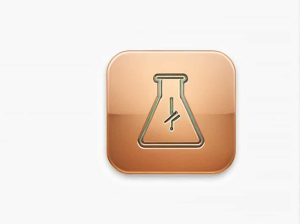Have you ever wondered why some substances turn red litmus paper blue? This is a key characteristic of bases also known as alkaline substances. Bases are an important class of compounds that play a crucial role in chemistry industry and everyday life.
In this topic we will explore:
- The definition of bases and their properties.
- Why they turn red litmus paper blue.
- Common examples of bases.
- Industrial and household applications of basic substances.
What is a Base?
A base is a substance that can accept protons (H⁺ ions) or donate hydroxide ions (OH⁻) in a chemical reaction. Bases are the opposite of acids and have a pH value greater than 7.
Key Properties of Bases
- Slippery texture (e.g. soap).
- Bitter taste (though tasting chemicals is not recommended).
- Conduct electricity when dissolved in water.
- Neutralize acids to form salt and water.
- Turn red litmus paper blue.
Why Do Bases Turn Red Litmus Paper Blue?
Litmus paper is an acid-base indicator that helps determine whether a substance is acidic or basic.
- Red litmus paper turns blue when exposed to a base.
- Blue litmus paper turns red when exposed to an acid.
This color change occurs because bases increase the concentration of hydroxide ions (OH⁻) in a solution. The hydroxide ions react with the litmus dye causing a shift in color to blue.
Common Substances That Turn Red Litmus Blue
Several substances exhibit basic properties and turn red litmus paper blue. These substances can be classified into strong bases and weak bases.
1. Strong Bases
Strong bases completely dissociate in water releasing a high concentration of OH⁻ ions.
| Substance | Chemical Formula | Common Uses |
|---|---|---|
| Sodium hydroxide | NaOH | Soap making drain cleaner |
| Potassium hydroxide | KOH | Fertilizers batteries biodiesel production |
| Calcium hydroxide | Ca(OH)₂ | Cement water treatment |
| Ammonia solution | NH₃(aq) | Household cleaner fertilizers |
Examples in Everyday Life
- Sodium hydroxide (NaOH) is found in drain cleaners.
- Potassium hydroxide (KOH) is used in liquid soaps.
- Calcium hydroxide (Ca(OH)₂) is an ingredient in plaster and cement.
2. Weak Bases
Weak bases partially dissociate in water and produce fewer hydroxide ions.
| Substance | Chemical Formula | Common Uses |
|---|---|---|
| Ammonia | NH₃ | Fertilizers cleaning agents |
| Sodium bicarbonate | NaHCO₃ | Baking soda antacid |
| Magnesium hydroxide | Mg(OH)₂ | Antacid laxative |
Examples in Everyday Life
- Ammonia (NH₃) is found in glass and surface cleaners.
- Sodium bicarbonate (NaHCO₃) is used in baking powder and antacids.
- Magnesium hydroxide (Mg(OH)₂) is used in medications like milk of magnesia.
Industrial and Household Applications of Basic Substances
Bases are used in a variety of industrial processes and household products.
1. Household Uses
Many common household products contain basic substances including:
- Soaps and detergents (contain sodium or potassium hydroxide).
- Toothpaste (contains mild bases to neutralize acids in the mouth).
- Cleaning agents (such as ammonia-based glass cleaners).
2. Industrial Applications
In industry bases play a vital role in:
- Paper production (sodium hydroxide is used to break down wood pulp).
- Water treatment (calcium hydroxide helps adjust pH levels).
- Fertilizer production (ammonia and potassium hydroxide are used to make fertilizers).
How to Test if a Substance is Basic?
There are several ways to test if a substance is a base:
- Litmus Paper Test – If the substance turns red litmus paper blue it is a base.
- pH Test – A base will have a pH above 7 when tested with a pH meter or universal indicator.
- Reaction with Acids – Bases neutralize acids forming salt and water.
For example:
Substances that turn red litmus paper blue are known as bases or alkaline compounds. These substances are widely used in household products medicine and industry.
- Strong bases (like NaOH and KOH) are highly reactive and used in industrial processes.
- Weak bases (like NH₃ and NaHCO₃) are found in cleaning products and medicine.
- Bases are important for neutralizing acids maintaining pH balance and various manufacturing processes.
Understanding basic substances helps us make informed decisions about chemical safety household products and industrial applications.



